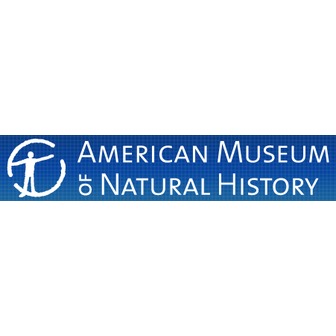American Museum of Natural History





The American Museum of Natural History has been a part of Manhattan in New York City in the United States since 14 decades. It is one of the largest museums across the world and has 25 buildings that are interconnected. The museum has about 46 exhibition halls, research laboratories and a library. These are the permanent aspects of the museum.
The permanent exhibition halls have names that have stayed with the museum for years. The Akeley Hall of African Mammals opened in 1936. The hall was named after Carl Akeley who was an explorer, taxidermist, sculptor and photographer. The hall was actually created and conceived by this explorer who sent his colleagues on expeditions to Africa to study and catalogue plants and animals.
The Arthur Ross Hall of Meteorites has some great specimens of Ahnighito, a 34 ton meteorite. It also has extra solar nanodiamonds that are more than 5 billion years old. The Bernard and Anne Spitzer Hall of Human Origins serves as an education center for children. It shows the process of human evolution in life size dioramas.
The Harry Frank Guggenheim Hall of Gems and Minerals has a large number of geological specimens and showcases rare and valuable gems and gemstones. One of the great pieces is Patricia Emerald, a 632 carat that has 12 sides. It is considered to be the world's most precious emerald and was found in a mine in the Columbian Andes. The gem was named after the mine owner's daughter. Another gemstone that was once displayed here includes the Star of India, a large sapphire that is extremely popular with visitors. The star has been shaped into a cabochon to enhance the beauty of the stone. This stone was stolen in 1964 along with the Eagle Diamond and de Long Ruby. While the Star of India was recovered in a Miami Bus Station, the Eagle Diamond has never been recovered.
Purpose
The mission of the American Museum of Natural History is to 'discover, interpret and disseminate - through scientific research and education - knowledge about human cultures, the natural world and the universe'. While accumulating and adding to the collection has always been a top priority for the museum, there are many other aspects that the museum focuses on today.
The museum established the Richard Gilder Graduate School in 1006, which studies comparative biology. The graduate school operates from within the museum building itself. The Museum therefore can offer a degree in Doctor of Philosophy and Master of Philosophy to qualified graduates who complete the curriculum.
The museum works on principles of sustainability that were created in 1998. These practices were created by a Sustainability Practices Committee that was formed from members across various divisions and departments. The whole exercise was to ensure that the beautiful facility that was more than a century old could be changed to be more sustainable. There has also been a lot of effort in order to reduce the effect that museum has on the environment. Green technologies have been used to increase opportunities as well. Not only does the museum practice green processes in the museum but educates the staff, employees and members and encourages them to practice the same in real life.
Some of the initiatives have resulted in projects that have resulted in design changes, renovations and restoration of the building and facilities. Collaborations have been made with other government bodies and groups that are pushing the cause of a green environment.
Preserving some of the greatest collections that the museum has is an ongoing aspect of the museum's efforts. Some of these include the world's largest dinosaurs, frogs, tornado alley, journey to the stars, Tibetan medical paintings and the great Inca road. The museum also believes in making education fun. It has created a concept of Ology cards that kids can collect and learn from at the same time.
History
The American Museum of Natural History was founded in 1869 and the museum was housed in the Arsenal building in Central Park. Among the founders of this museum were Theodore Roosevelt, John David Wolfe, Andrew H Green, Morris K Jesup, Moses H Grinnel, Charles A Dana and Howard Potter. This museum was also a monument that helped Dr. Albert S Bickmore realize his dream. He had lobbied for a museum of natural history in New York for years and it was Governor John Thompson Hoffman who actually gave the go ahead for the project.
The museum's first building was started in Manhattan in 1874 and the Victorian Gothic building was opened to the public in 1877. While the design of the initial building created by Calvert Vaux was great, it was soon covered in a shadow by the south range designed by J Cleaveland Cady. An entrance was created in 1936 on Central Park West by John Russell Pope. Not much was added to the building per se since then, but the artifacts that it holds did change significantly as the museum continued to acquire more.
The Library of the American Museum of Natural History grew from the day of its inception. Initially the library acquired its books from gifts offered by various people including John C Jay, the Carson Brevoort library, the Harry Edwards entomological library, the ornithological library of Daniel Giraud Elliot, the Hugh Jewett collection of voyages and travel and the Jules Marcou geology collection. In 1903 the American Ethnological Society gave its collection to the American Museum of Natural History. The New York Academy of Sciences was the next library that went the same way.
The library has a collection of 550,000 volumes of various kinds of written works, including monographs, pamphlets, reprints, microforms, manuscripts, memorabilia and rare books. The various areas that the library has books on include earth and planetary science, astronomy, herpetology, ethology, invertebrates, ecology, conchology and travel.
Explore Related Categories








